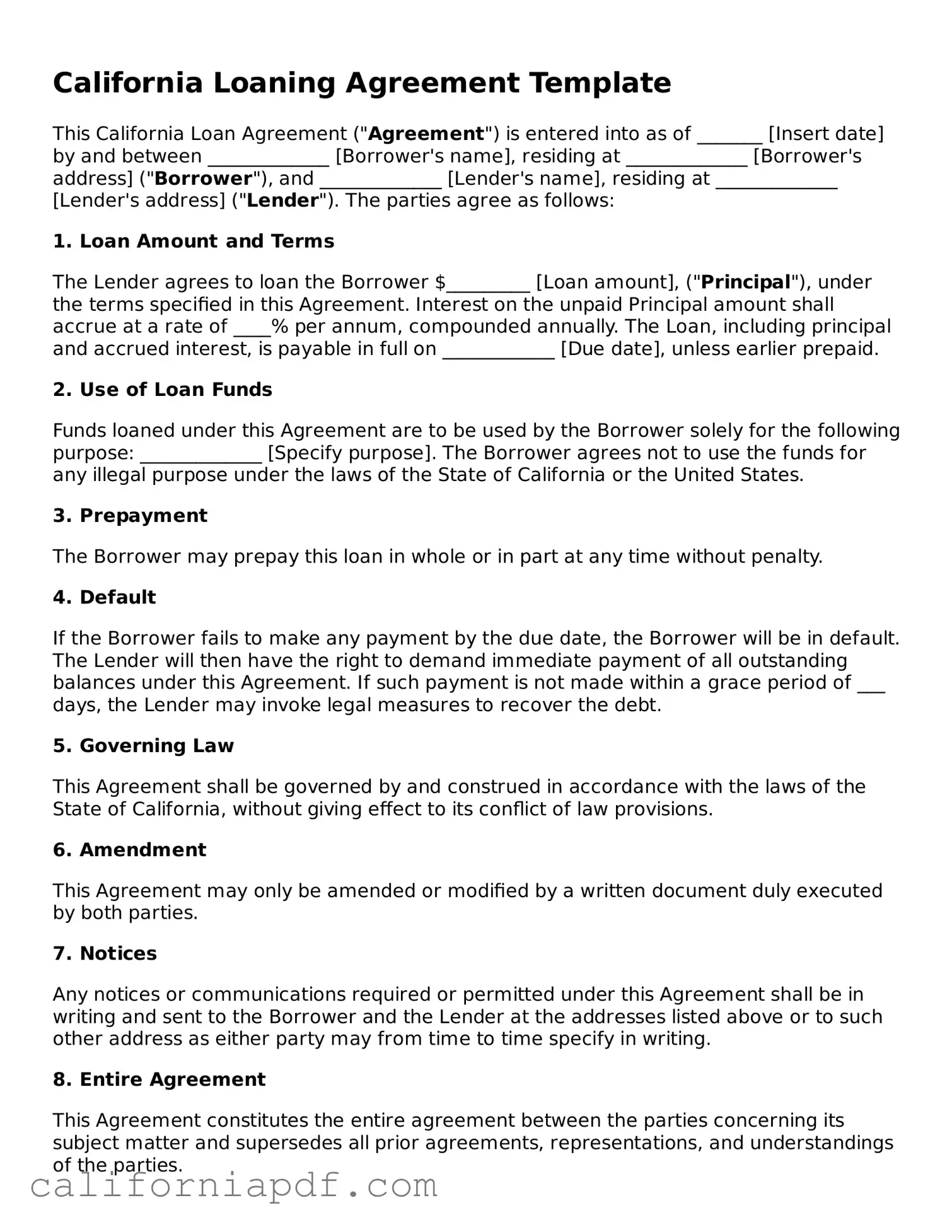California Loaning Agreement Template
This California Loan Agreement ("Agreement") is entered into as of _______ [Insert date] by and between _____________ [Borrower's name], residing at _____________ [Borrower's address] ("Borrower"), and _____________ [Lender's name], residing at _____________ [Lender's address] ("Lender"). The parties agree as follows:
1. Loan Amount and Terms
The Lender agrees to loan the Borrower $_________ [Loan amount], ("Principal"), under the terms specified in this Agreement. Interest on the unpaid Principal amount shall accrue at a rate of ____% per annum, compounded annually. The Loan, including principal and accrued interest, is payable in full on ____________ [Due date], unless earlier prepaid.
2. Use of Loan Funds
Funds loaned under this Agreement are to be used by the Borrower solely for the following purpose: _____________ [Specify purpose]. The Borrower agrees not to use the funds for any illegal purpose under the laws of the State of California or the United States.
3. Prepayment
The Borrower may prepay this loan in whole or in part at any time without penalty.
4. Default
If the Borrower fails to make any payment by the due date, the Borrower will be in default. The Lender will then have the right to demand immediate payment of all outstanding balances under this Agreement. If such payment is not made within a grace period of ___ days, the Lender may invoke legal measures to recover the debt.
5. Governing Law
This Agreement shall be governed by and construed in accordance with the laws of the State of California, without giving effect to its conflict of law provisions.
6. Amendment
This Agreement may only be amended or modified by a written document duly executed by both parties.
7. Notices
Any notices or communications required or permitted under this Agreement shall be in writing and sent to the Borrower and the Lender at the addresses listed above or to such other address as either party may from time to time specify in writing.
8. Entire Agreement
This Agreement constitutes the entire agreement between the parties concerning its subject matter and supersedes all prior agreements, representations, and understandings of the parties.
9. Signatures
Both parties agree to the terms and conditions set forth in this Agreement:
Borrower's Signature: ______________________ Date: _______
Lender's Signature: ______________________ Date: _______
